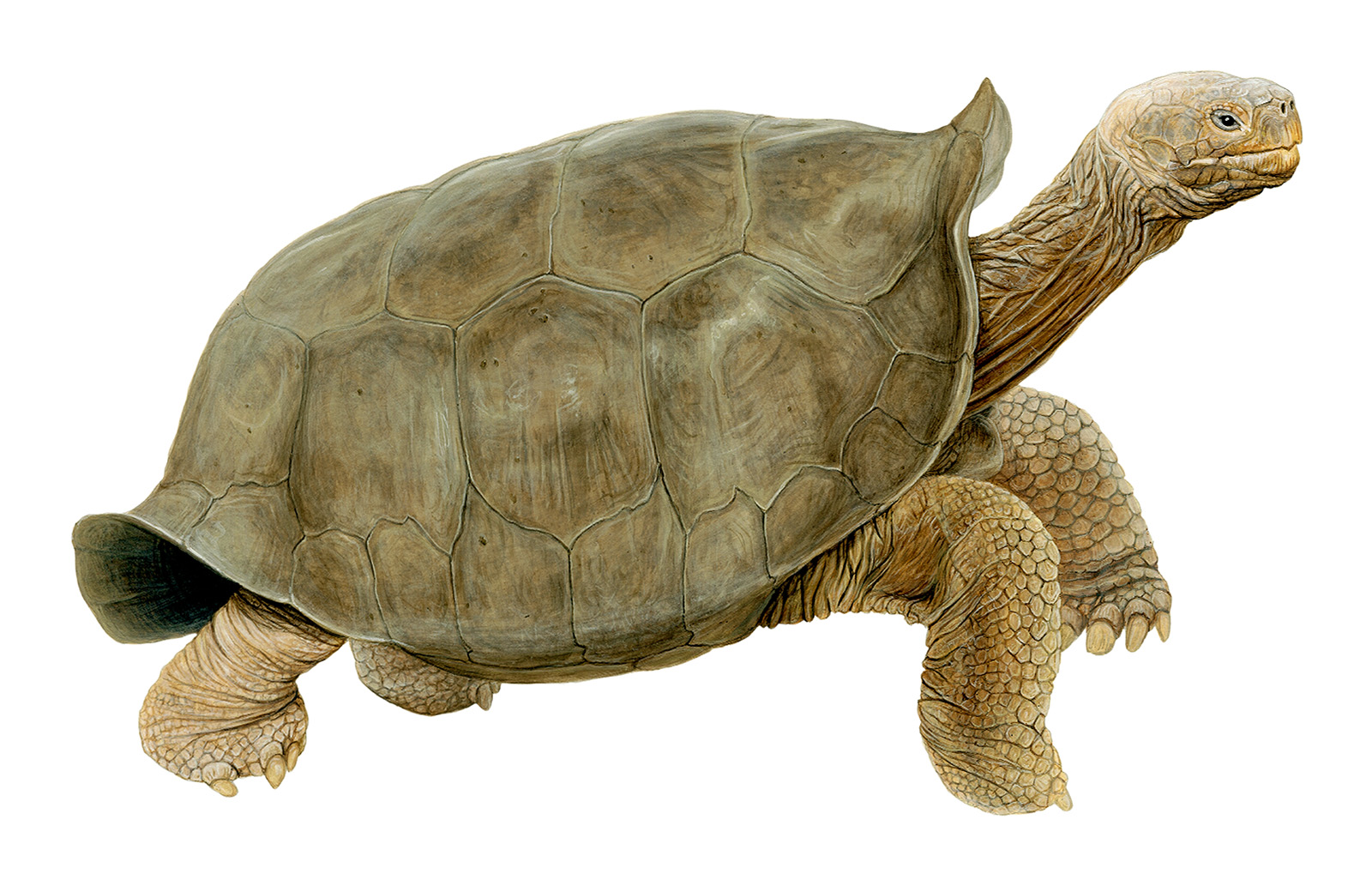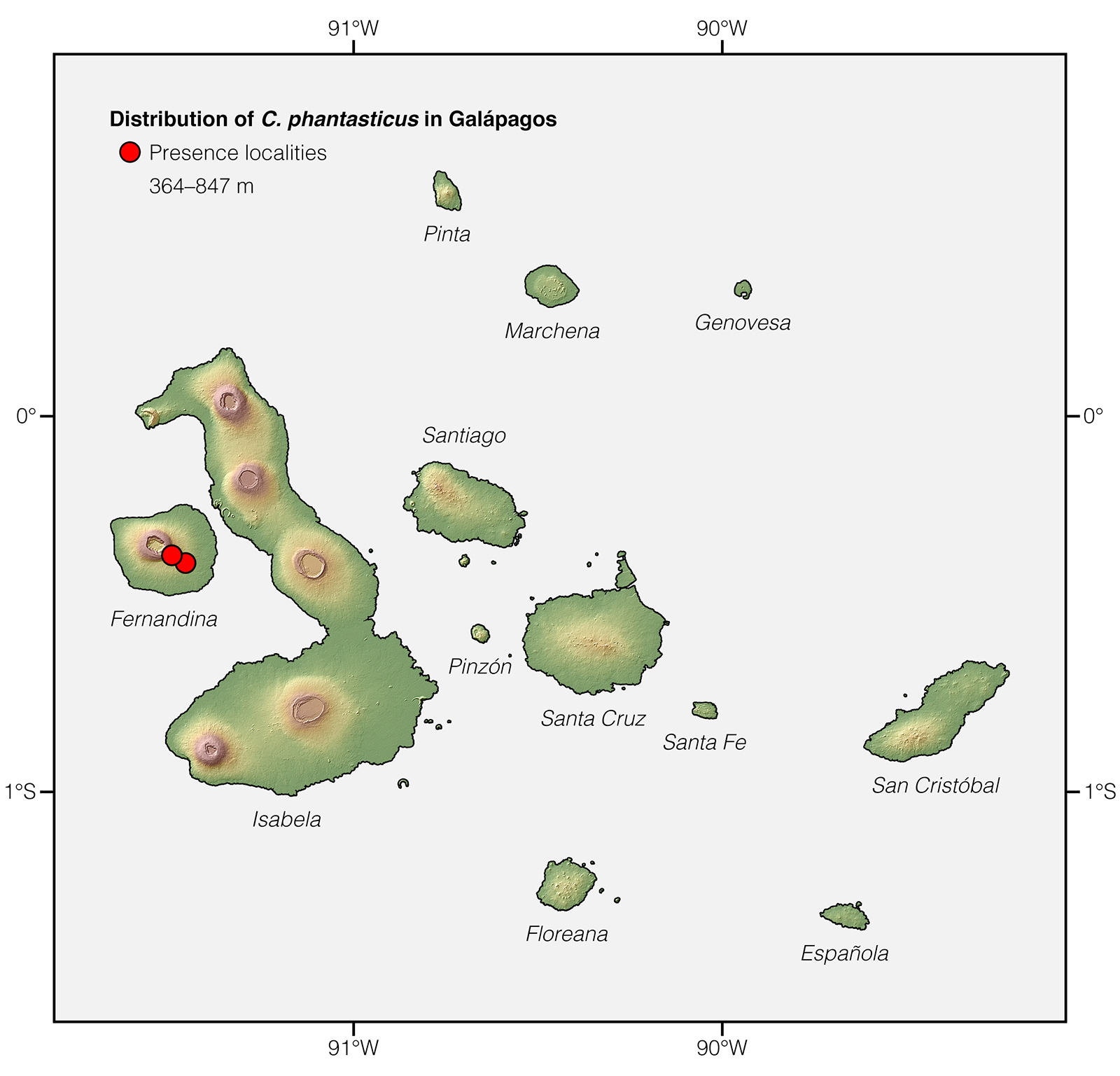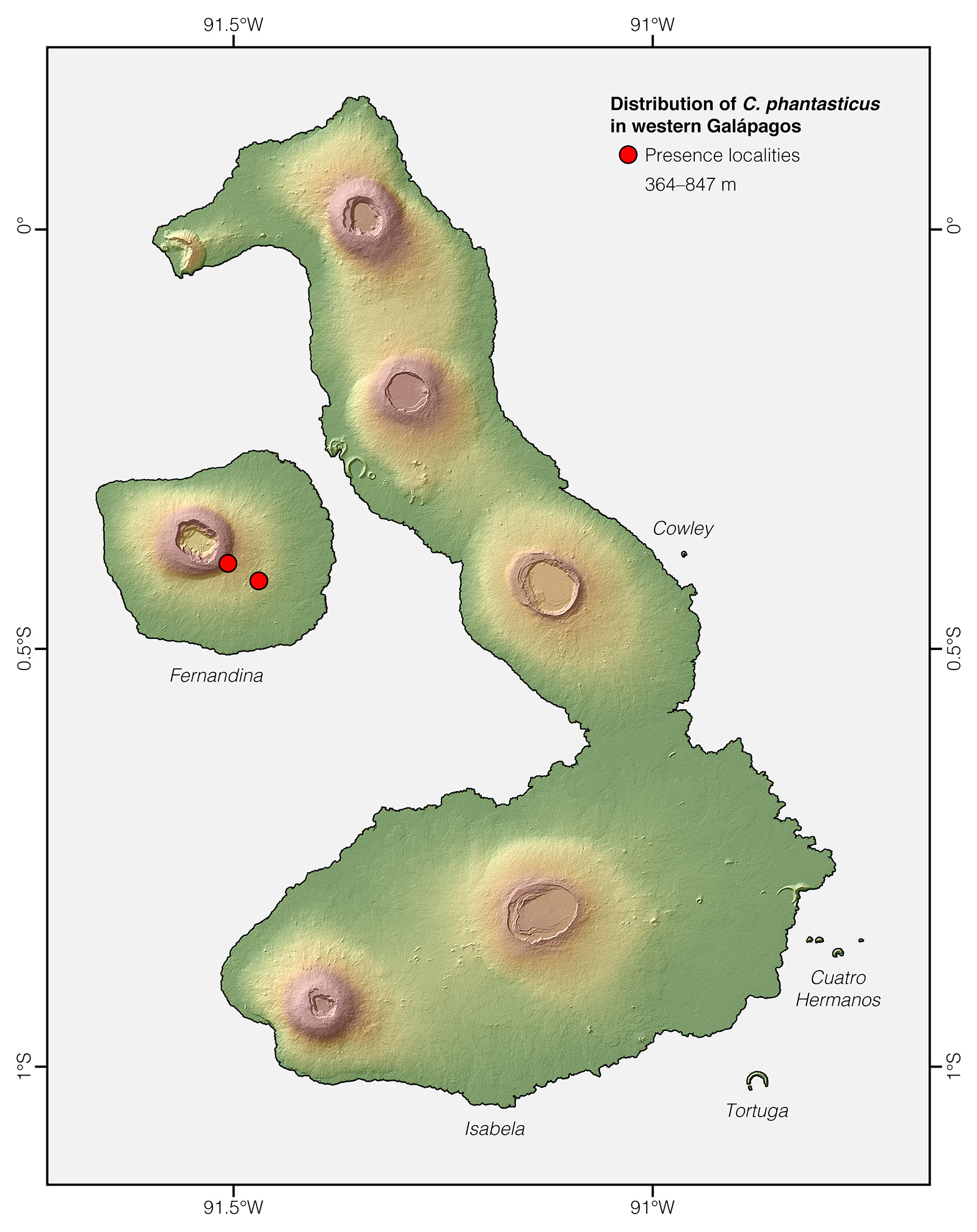Fernandina Giant-Tortoise |
Reptiles of Ecuador | Testudines | Testudinidae | Chelonoidis phantasticus
English common names: Fernandina Giant-Tortoise, Narborough Island Giant-Tortoise.
Spanish common names: Galápago de Fernandina, tortuga gigante de Fernandina.
Recognition: ♂♂ 87.6 cm ♀♀ 50.7 cm. Chelonoidis phantasticus is the only species of giant tortoise known to occur on Fernandina Island. It is recognizable by its strongly saddlebacked carapace.
Picture: Adult male. | |
 | |
Natural history: Historically extremely rare. Chelonoidis phantasticus is a diurnal and terrestrial tortoise inhabiting deciduous forests. Tortoises of this species feed on grasses, herbs, shrubs, cacti.1,2
Conservation: Critically Endangered.3 Until very recently, Chelonoidis phantasticus was only known from a single individual collected in 1906 by an expedition of the California Academy of Sciences.4 Since there are no records of whalers and buccaneers collecting Fernandina Giant-Tortoises5,6 and there are no introduced predators on the island, C. phantasticus was thought to have succumbed to volcanic activity.3,7 However, circumstantial evidence (tortoise scats, bite marks, and footprints) indicated that living individuals of the Fernandina Giant-Tortoise still existed.3 This optimistic guess has been nearly (pending genetic assignment and upcoming fieldwork) confirmed on February 2019, when an expedition led by Washington Tapia found an adult female presumably assigned to C. phantasticus. This individual is now at the Fausto Llerena breeding center in Santa Cruz Island.
Distribution: Chelonoidis phantasticus is endemic to Fernandina Island in Galápagos, Ecuador. Although Fernandina is a 642 km2 island, only about 39–137 km2 is formed by habitat that can be potentially inhabited by tortoises.


Etymology: The generic name Chelonoidis comes from the Greek word chelone (meaning “tortoise”).8 The specific epithet phantasticus comes from the Greek word phantasia (meaning “illusion”),8 and it probably reflects John Van Denburgh's impression that Fernandina Island, described to him as one large cone of black lava,4 was no habitat for a real tortoise.
"...the volcano is in awful operation at present. There is one large cone which is like a large boiling pot which is boiling over. The red lava covers a field of 5 or 6 miles, which is a great illumination in the night."
Thomas Matthews, master of the whaling ship Equator, 1846.6
See it in the wild: It seems that very few individuals of Chelonoidis phantasticus still persist in the highlands of Fernandina Island, which is inaccessible to tourism. The only known living individual of the species is at the Fausto Llerena breeding center in Santa Cruz island.
Special thanks to Holger Vetter for symbolically adopting the Fernandina Giant-Tortoise and helping bring the Reptiles of Ecuador book project to life.
Click here to adopt a species.
Authors: Alejandro ArteagaaAffiliation: Fundación Khamai, Reserva Arlequín, Ecoruta Paseo del Quinde km 56, Santa Rosa de Mindo, Pichincha 171202, Ecuador. and Juan M GuayasaminbAffiliation: Laboratorio de Biología Evolutiva, Universidad San Francisco de Quito (USFQ), Quito, Ecuador.,cAffiliation: Galapagos Science Center, Galápagos, Ecuador.,dAffiliation: Centro de Investigación de la Biodiversidad y Cambio Climático, Universidad Tecnológica Indoamérica, Quito, Ecuador.
Academic reviewers: Adalgisa Caccone.
Illustrator. Matt Patterson.
How to cite? Arteaga A, Guayasamin JM (2020) Chelonoidis phantasticus. In: Arteaga A, Bustamante L, Vieira J (Eds) Reptiles of Ecuador: Life in the middle of the world. Available from: www.reptilesofecuador.com
Literature cited:
- Washington Tapia, unpublished data.
- Hendrickson JR (1966) The Galápagos tortoises Geochelone Fitzinger 1835. In: Bowman RI (Ed) The Galápagos. Proceedings of Symposium of the Galápagos International Scientific Project, Berkeley, 252–257.
- Kiester AR, Gibbs JP, Rhodin AGJ, Tapia W, Cayot LJ (2017) Chelonoidis phantasticus. The IUCN Red List of threatened species. Available from: www.iucnredlist.org
- Fritts TH, Fritts PR (1982) Race with extinction: herpetological notes of J. R. Slevin's journey to the Galápagos 1905–1906. Herpetological Monographs 1: 1–98.
- Pritchard PCH (1996) The Galápagos tortoises. Nomenclatural and survival status. Chelonian Research Monographs 1: 1–85.
- Townsend CH (1925) The Galápagos tortoises in their relation to the whaling industry: a study of old logbooks. Zoologica 4: 55–135.
- MacFarland CG, Villa J, Toro B (1974) The Galápagos giant tortoises (Geochelone elephantopus). Part II: Conservation methods. Biological Conservation 6: 198–212.
- Brown RW (1956) Composition of scientific words. Smithsonian Books, Washington, 882 pp.